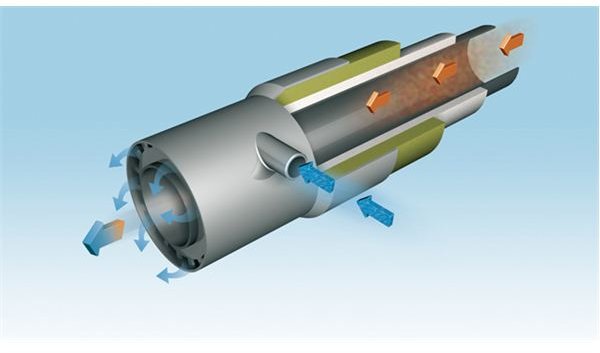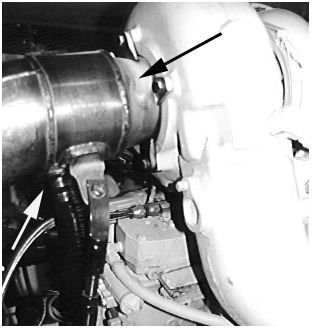Marine Engine Exhaust Riser & Exhaust Manifolds: What it is and its Failure
Introduction
Marine engine exhaust riser is an important part of any marine engine exhaust system, whether big or small. Attached to the exhaust manifolds of the engine cylinders, exhaust risers act as the connection between the cylinder manifold and exhaust hose. The risers, sometimes also known as elbows mainly because of their horseshoe shape, are located near the top and along the side of the engine. Both the manifold and riser are usually made from cast iron and are painted on the outside to prevent corrosion.
The number of risers and manifolds in a system depends on the type of marine engine. Generally, the number of risers and manifold are equal in all types of marine engines. Moreover, all the risers are water cooled to prevent the effect of high temperature exhaust gases and also to cool it. Thus, the exhaust risers performs two main functions in the engine’s exhaust system – It provides the cooling water for the engine exhaust cooling and also prevents cooling water from entering the engine through the exhaust manifold.
Construction Of Exhaust Risers
The risers are connected at the middle or aft of the manifolds at one end and to the exhaust hose at the other end. Basically marine engine risers are in shape of conventional pipes; however, in order to fight the heat of the engine exhaust and also to cool it, the risers have two layers one inside the other, for the passing of cooling water. The engine exhaust passes through the inner layer, and outer layer surrounding it acts as water-filled compartment or water jacket. The water jacket lasts only uptil the edge of the rise and does not continue into the exhaust hose. The water compartment of the riser ensures that the engine exhaust cools down completely before it reaches the exhaust hose so that the later doesn’t get damaged due to high temperature of the exhaust.

Failure of Exhaust Risers
Risers are generally made of cast iron and cast iron gets corroded very easily. Moreover, as sea water is used for the cooling purpose, even a good quality riser last only for 4-5 years. Also if proper maintenance is not done, the corrosion layer becomes extremely thick on the surface, leading to the riser material failure. Sometimes, the internal walls of the jacket also get corroded and prevent the passage of cooling water. The reduction of the cooling water flow increases the exhaust temperature, resulting in engine over heating and failure of the riser.
Cooling water is extremely important for the risers; however it becomes extremely dangerous when the water leaks inside the exhaust layer. In case of a leakage, the cooling water seeps into the engine cylinder through the exhaust manifold. This can lead to adverse effects on various engine parts, especially piston, and also create hydro-lock. Hydro-lock occurs when the cooling water goes to the engine cylinder and the piston tries to compress this water. Since water inside the cylinder cannot be compressed, the engine suffers extreme stresses and damage, leading to a requirement of complete overhaul of the system.
How to find out if the Riser is Leaking?
The most common symptom in case of water leakage from the riser is failure in starting of the engine. Also if the engine produces white smokes there are high chances that it has water in the system. A leaked exhaust raiser or manifold will also lead to the release of high temperature exhaust to the exhaust hose. The exhaust temperature of the riser can be checked using an infrared pyrometer. The temperature at the exhaust riser will also increase with the increase in engine RPM and this can be a good way to find out leaky or clogged risers. For the same reason, maximum of the new engines have temperature gauges attached at both entry and exhaust of the risers.

References and Image Credits
Image credits
